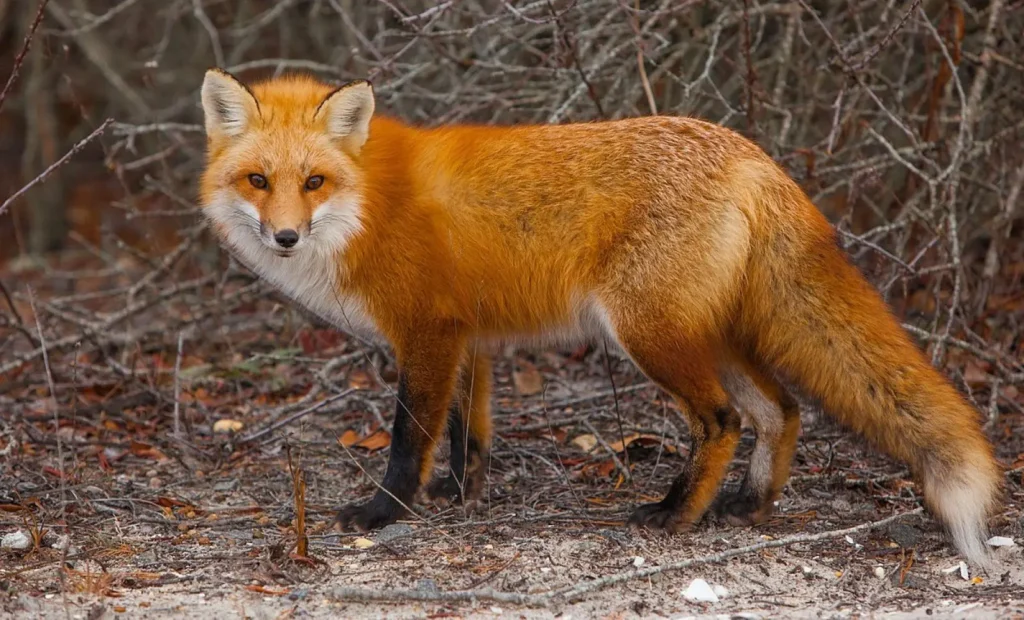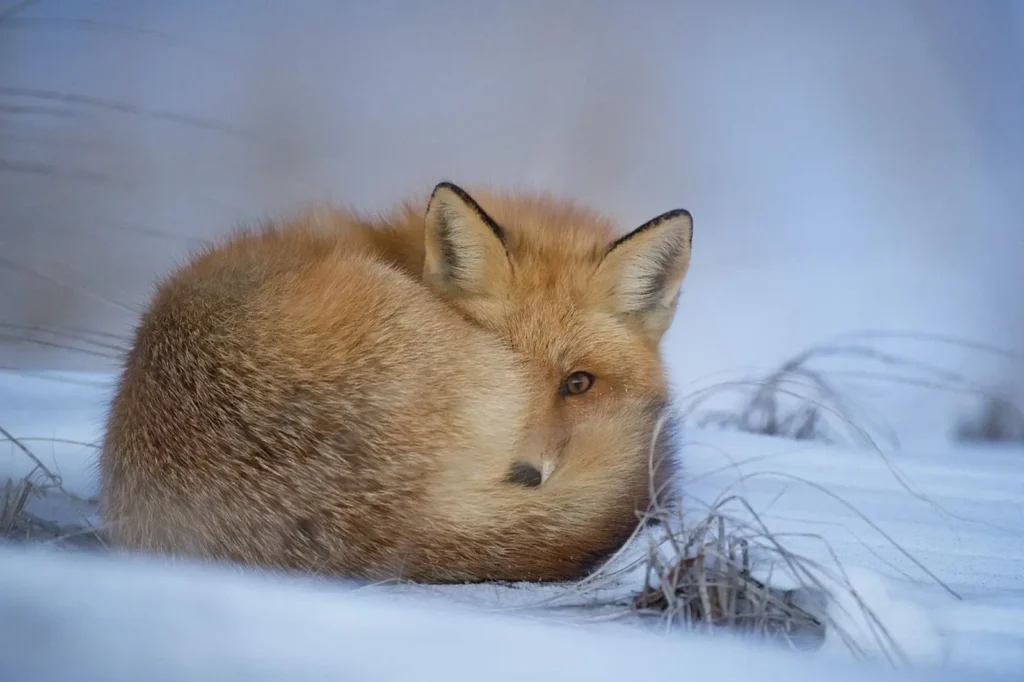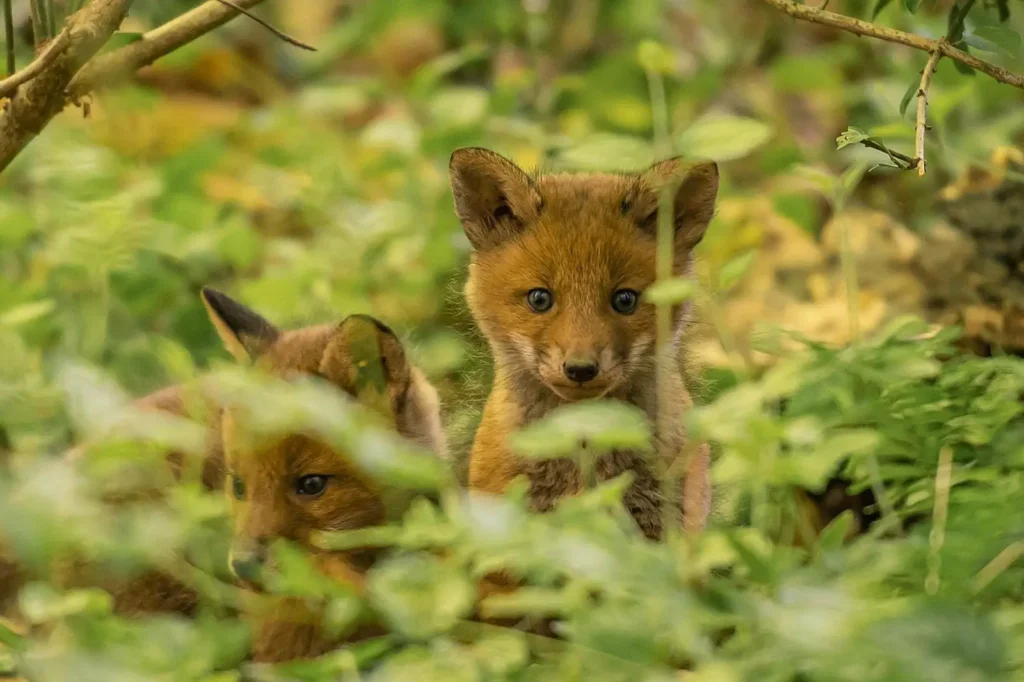Common fox (Vulpes vulpes) is one of the most famous and widespread predators on the planet. It is considered to be a symbol of cunning, agility and adaptabilityand her image is widely used in folk tales, myths and folklore of different nations.
Thanks to unique ability to adapt to different conditionsFoxes are found both in wild forests and steppes and on the outskirts of cities. They are skilled hunters, use sophisticated survival strategies, and can even "communicate" through distinctive sounds.
Let's take a closer look, what a common fox looks like, how it lives, what it eats, where it lives, what are the peculiarities of its behavior and what threats this intelligent predator faces.

📌 Scientific classification
🔹 The Kingdom: Animals (Animalia)
🔹 Type: Chordal (Chordata)
🔹 Class: Mammals (Mammalia)
🔹 Row: Predatory animals (Carnivora)
🔹 Family: Canines (Canidae)
🔹 Gender: Foxes (Vulpes)
🔹 View: Common fox (Vulpes vulpes)
🔎 Interesting: The common fox is the largest representative of the genus Vulpes and one of the best examples of evolutionary plasticity among carnivores.

🎨 Description and appearance
The common fox has elegant, graceful body and thick fur that changes depending on the season.
🔸 Body length: 50 - 90 cm
🔸 Tail length: 30 - 55 cm
🔸 Height at the withers: 35 - 45 cm
🔸 Weight: 3 - 14 kg (males are usually larger than females)
🔸 The color of the coat: from red to grayish-brown
🔸 Oko: yellow-amber with vertical pupils
🧥 Main Features:
✔ Long fluffy tail ("kutsak") - used for balance and warmth.
✔ Pointed ears - perfectly pick up the sounds of prey.
✔ Narrow muzzle - provides an aerodynamic shape during hunting.
💡 Fact: The color of foxes depends on the subspecies and habitat. In North America, there are silver and black foxesand in the deserts sandy or paler.

🌍 Habitat
Common fox the most common type of foxwhich lives on all continents except Antarctica.
📍 Where can you find the common fox?
✔ Europe - forests, fields, cities
✔ Asia - steppes, mountainous areas, tundra
✔ North America - forest steppe, mountains, urban suburbs
✔ Africa (north) - deserts, savannas
✔ Australia - artificially introduced, became an invasive species
💡 Fact: foxes adapt perfectly even to large cities! They live in London, Paris, Berlin, and even Tokyo, finding food on the streets.
🦴 What does a fox eat?
Common fox omnivorous predatorwhich can change its diet depending on the availability of food.
🔹 The main prey:
✔ Rodents (mice, hares, squirrels) 🐭
✔ Birds, their eggs and chicks 🦆🥚
✔ Insects (beetles, locusts, caterpillars) 🦗
✔ Fish, shellfish and even carrion 🐟
🔹 Vegetable food:
✔ Berries, fruits, nuts 🍎
✔ Mushrooms and roots 🍄
💡 Fact: a fox can store foodburying it in the ground to come back later.
🏠 Lifestyle and behavior
🔸 Foxes are lonersThey form pairs only during the breeding season.
🔸 Nori - are used for giving birth to cubs and resting.
🔸 Hunting takes place at night or at dawn.
🔸 Communication - includes barking, screeching, purring, growling.
💡 Fact: Foxes can use other people's burrows (badgers, rabbits) or even settle near people in abandoned buildings.

🍼 Reproduction and upbringing of babies
🔹 Mating season: winter (January-March)
🔹 Pregnancy: 49 - 58 days
🔹 Number of cubs: 3 - 12 fox cubs
🔹 Mother breastfeeds for 5-6 weeks
🔹 Fox cubs leave the family at 6-7 months of age
💡 Fact: In the first weeks of life bald eagles are blind and covered with gray fluffand the red color comes later.
🔥 Threats and security
📉 Population: stable, but declining in some regions.
🆘 Main threats:
✔ Hunting - for fur or as a "pest"
✔ Loss of habitat
✔ Pesticide and poison poisoning
🛡 Security measures:
✔ Protection in nature reserves
✔ Population control in cities
✔ Veterinary supervision
💡 Fact: Foxes can transmit rabies, so in many countries, they carry out vaccination of wild animals through special baits.
🤯 Interesting facts about foxes
🔹 Have a magnetic field "navigator" - During hunting, they often rush at the prey at an angle of 20° to the northeast!
🔹 Close relatives of wolves and dogs - but behave like cats.
🔹 Fox cubs can purr - like real cats!
🔹 Very smart - They can open doors, find food caches, and deceive other animals.
🎯 Conclusion
Common fox a true genius of survivalIt is a dog that can adapt to any conditions. It is an excellent hunter, a cunning strategist, and one of the most interesting representatives of the canines.
💬 Do you like foxes? Have you seen them in nature? 🦊